Deadly Semantics: Comparing Orlando With the Massacre at Wounded Knee

By:
The shooting Sunday morning in Orlando that left 49 victims dead has been called the deadliest shooting in modern history. Its distinction as the "deadliest," however, has received backlash on social media by people who argue it ignores the massacre at Wounded Knee in 1890, where members of the U.S. Cavalry shot and killed at least 150 Lakota Sioux. Some say it was double that. Many of the dead were women and children.
So ATTN: spoke to experts about Wounded Knee.
"The Indians had no chance, really," Texas Tech historian Paul Carlson told ATTN:. "They were cold, hungry, and just trying to reach Pine Ridge, about 15 miles away when soldiers overtook them and ordered the Indians to camp at Wounded Knee."
But none of them were comfortable with the public comparing the Orlando shooting and Wounded Knee.
"It's a truly awful comparison," Carlson said.
"Wounded Knee is not at all comparable to the Orlando shooting," said Texas Tech historian Catherine Franklin.
Northeastern University professor of criminology James Alan Fox, who has taught and written about criminal justice and homicide for the past 30 years, shared Carlson's sentiment. "To some extent you're trivializing these horrific cases," he said.
"That we're having this public discussion simply illustrates, among other things, that the United States has long been a violent country, especially in comparison to other Western nations," said Grant Duwe, who wrote a book about mass shootings titled "Mass Murder in the United States: A History" (2007). He's also the director of research and evaluation for the Minnesota Department of Corrections.
So, should we consider Wounded Knee the deadliest mass shooting in American history?
No. Although it was a horrifying loss of life, criminal justice experts agree that we probably shouldn't use the term "mass shooting" for an incident such as Wounded Knee. While there is no one agreed-upon definition for mass shootings, Fox said he would exclude military killings from the same conversation as modern mass shootings by civilians.
"I would not include cases like Wounded Kee because that's a very different kind of thing," Fox said. He defines a mass shooting as an incident where more than four people are shot by a civilian.
Duwe said he would not include Wounded Knee, either, but that the term "mass shootings" lacks precision.
"For example, an individual who uses a gun to kill his spouse and three children inside the home would be committing a mass shooting, yet this 'familicide,' the most common form of mass murder, would not fit the popular perception of a mass shooting," Duwe said.
The modern definition of a mass shooting usually means "mass public shooting," which Duwe defines as an incident where four or more people are killed with a gun in a public location, without a connection to another crime such as robbery or gang violence. He said that Wounded Knee does not fit the definition of a mass public shooting.
Then why are people talking about it?
It's an important and bloody part of American history.
"Wounded Knee is a symbol of northern Plains Indians' failed struggle to hold their land and to retain their traditional customs," Carlson said. "Black Elk, a Lakota leader, said some years later, 'Something else died there in the bloody mud [at Wounded Knee], and was buried in the blizzard. A people's dream died there. It was a beautiful dream.'"
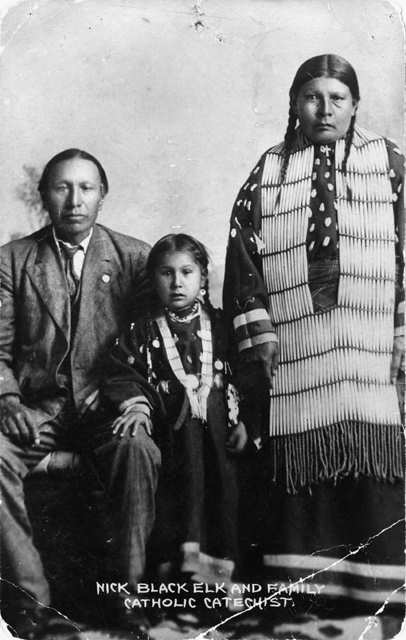 Wikimedia Commons/ The Sixth Grandfather, edited by Raymond DeMallie - wikimedia.org
Wikimedia Commons/ The Sixth Grandfather, edited by Raymond DeMallie - wikimedia.org
Although he wouldn't include Wounded Knee in a discussion of modern mass public shootings, Duwe did include Wounded Knee in a broader discussion about American mass murders in his book. He also mentions the 1921 Tulsa race riot where a white mob attacked Tulsa's Black community and an estimated 300 people were killed.
"Most of these mass killings took place amid the Indian Wars, the labor movement, and racial terrorism in the post-Civil War South, e.g. Tulsa race riot. While none of these massacres fit the definition of a mass public shooting, they are no less tragic," Duwe said. "In fact, they represent some of the darkest chapters in American history."
Context aside, you should know about the Wounded Knee Massacre.
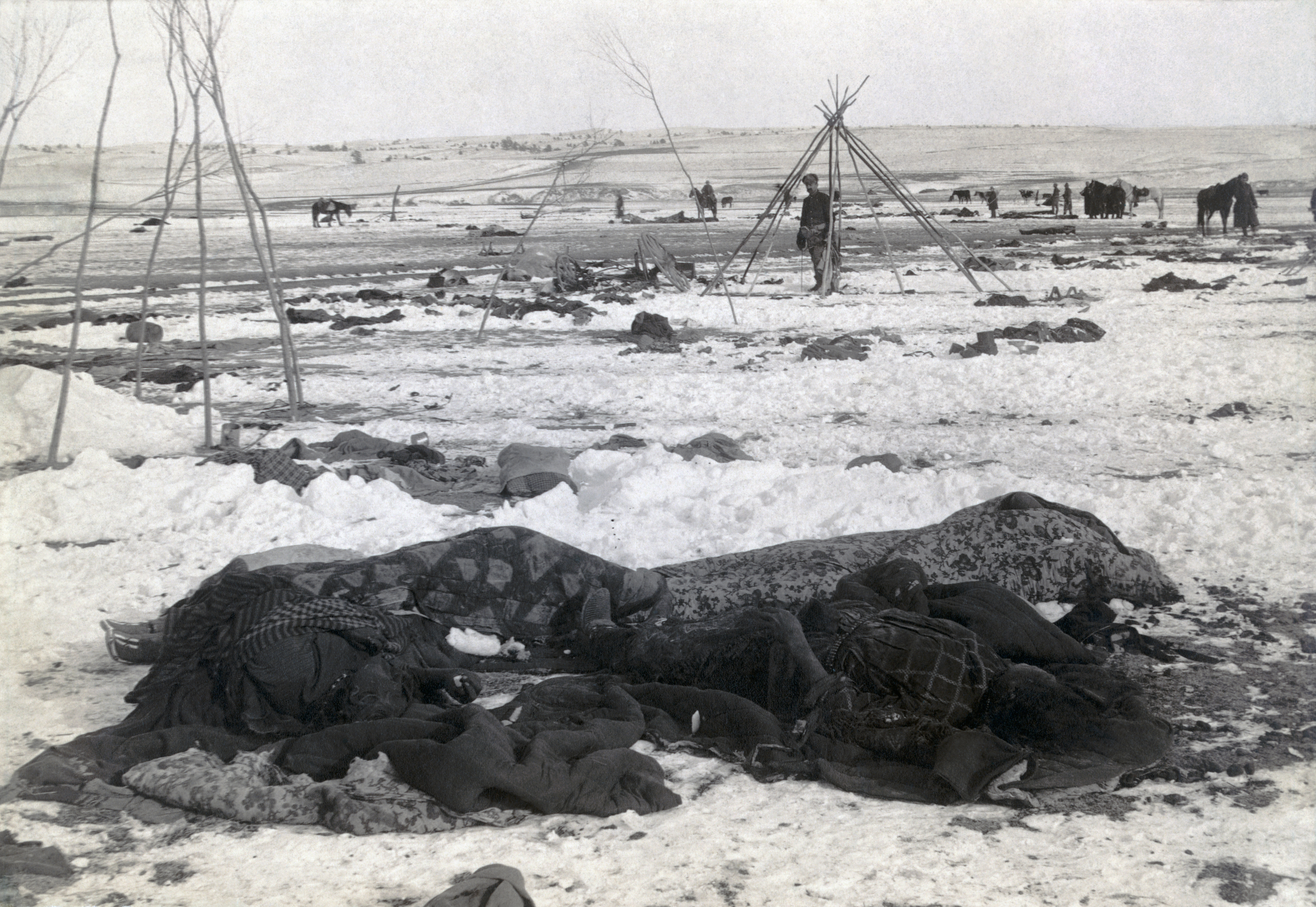 Wikimedia Commons - wikimedia.org
Wikimedia Commons - wikimedia.org
In 1890, the U.S. Army shot and killed at least 146 Lakota Sioux men, women, and children about 15 miles away from the Pine Ridge Reservation in South Dakota, according to Carlson. However, the death toll is probably much higher and Carlson says that the known number of Lakotas killed continues to increase.
Leading up to the massacre, the U.S. government was concerned about the growing Ghost Dance spiritual movement.
Ghost Dancers believed that a return to traditional Native American customs and values would get rid of the non-Indians who forced them onto reservations, according to history.com. U.S. authorities mistakenly thought that Chief Sitting Bull was a leader in the Ghost Dance movement, so on Dec. 15, 1890, they came to arrest him and killed him in the process.
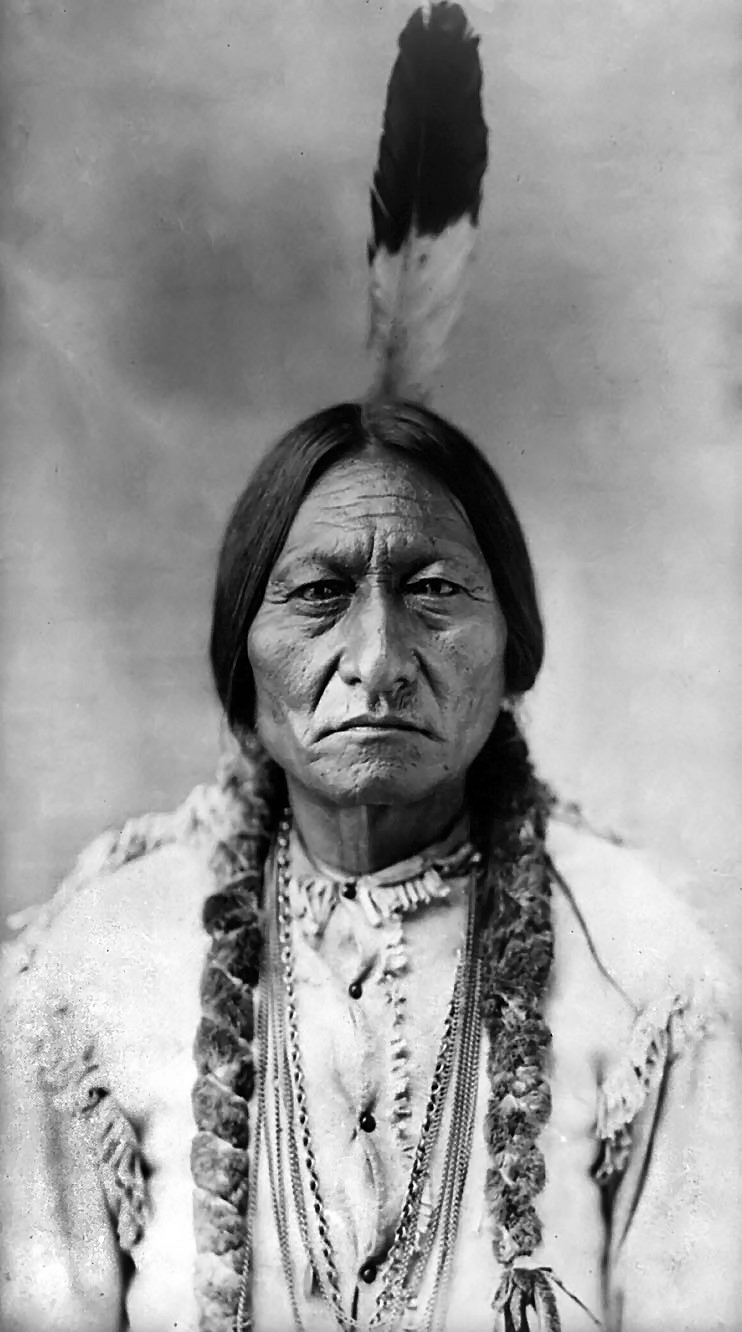 Wikimedia Commons/By David Frances Barry (1854-1934) [Public domain] - wikimedia.org
Wikimedia Commons/By David Frances Barry (1854-1934) [Public domain] - wikimedia.org
About two weeks later, on Dec. 29, 1890, the U.S. Army' s 7th Cavalry circled a group of Lakota Sioux near Wounded Knee Creek and started taking their weapons. In the middle of this disarming, a fight broke out between a soldier and a Lakota Sioux.
"The colonel in charge, James W. Forsyth, had no experience with Indians. He tried to disarm the Lakotas by force," said Texas Tech historian Catherine Franklin. "In fact, he aimed artillery pieces at them in order to intimidate them."
Franklin said that the soldiers tried to take a weapon from a disabled Lakota man named Black Coyote who was either blind or mentally ill. Unfortunately, the gun went off, and Lakota warriors who had hidden their guns during the disarming pointed them at the soldiers.
The U.S. Army turned their guns on the Native Americans, killing many Lakotas and at least 25 soldiers. (Carlson said many of the soldiers died from "friendly fire," meaning they accidentally shot their fellow soldiers.)
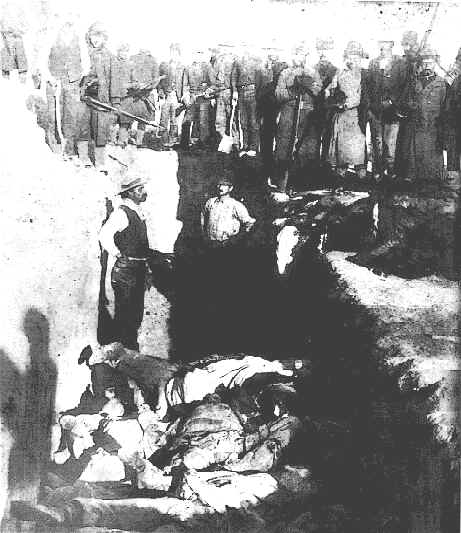 Wikimedia Commons - wikimedia.org
Wikimedia Commons - wikimedia.org
Although this incident has been described as a "battle" by some historians, others, like Franklin don't agree.
"Wounded Knee was neither an act of genocide nor a battle," said Franklin. "It was a massacre provoked by an incompetent commander who put soldiers and families in a dangerous situation bound to end in violence."
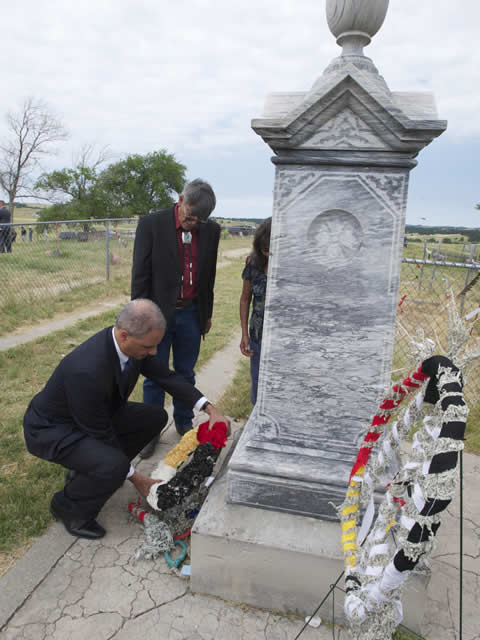 Wikimedia Commons/By US Department of Justice [Public domain] - wikimedia.org
Wikimedia Commons/By US Department of Justice [Public domain] - wikimedia.org
The deaths at Wounded Knee marked an important and tragic point in American history for Native Americans. "Wounded Knee was the last major military confrontation between the Plains Indians and federal army." Carlson said. "After Wounded Knee came hunger, disease, malnutrition, and population decline."
Thousands of Native Americans were killed or forced onto reservations by the U.S. government throughout American history. There are 5 million people with Native American ancestry in the U.S., according to the National Congress of American Indians.
